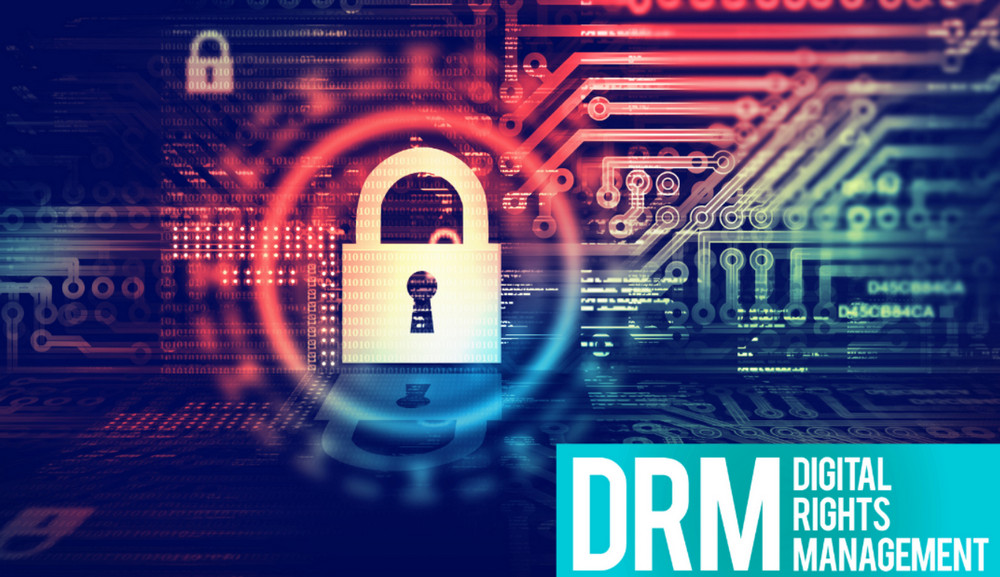The solution to protect copyrighted content DRM browser Chrome? Digital Rights Management (DRM) is a technology used to protect copyrighted content from unauthorized access and distribution. While implementing DRM for web content in browsers like Chrome, Widevine is commonly used. Widevine is a DRM component developed by Google that is integrated into Chrome.
Understanding Copyright Protection in Digital Environments
Understanding copyright protection in digital environments is crucial for creators, consumers, and those involved in the distribution of digital content. Copyright is a legal concept that grants the creator of original work exclusive rights to its use and distribution, usually for a limited time, to enable the creator to receive compensation for their intellectual investment. This includes various types of content in digital environments such as text, images, music, videos, software, and more. Here are key aspects to consider:
The significance of copyright protection in the digital era
Copyright protection in the digital era is of paramount significance due to several factors that have transformed the way information and creative works are created, distributed, and consumed. Here are some key reasons highlighting the importance of copyright protection in the digital age:

Encouraging Creativity and Innovation
Copyright protection provides creators with the incentive to invest time, effort, and resources into producing original works by granting them exclusive rights. This encourages a vibrant and innovative cultural landscape.
Monetization and Compensation
Copyright allows creators to monetize their works by controlling how they are used, distributed, and reproduced. This enables creators to derive economic benefits from their intellectual property and supports the sustainability of creative industries.
Digital Distribution and Global Reach
In the digital era, content can be easily distributed globally through online platforms. Copyright protection ensures that creators have control over the dissemination of their works and can manage their global presence.
Protection Against Unauthorized Use
The ease of digital reproduction and distribution makes works more susceptible to unauthorized use and piracy. Copyright protection provides legal tools to combat infringement and unauthorized distribution, safeguarding creators from economic losses.
Incentive for Investment in Content Production
Copyright protection creates an environment where investors are more willing to fund and support creative projects, as they can be assured of a return on their investment through exclusive rights and control over the commercialization of the content.
Digital Rights Management (DRM)
Copyright protection facilitates the implementation of DRM technologies, which help control access to digital content and prevent unauthorized copying. This is crucial for protecting the economic interests of content creators and distributors.

Fair Compensation for Digital Exploitation
The digital era has introduced new ways of exploiting creative works, such as streaming services and digital downloads. Copyright protection ensures that creators receive fair compensation for the digital exploitation of their works.
Preserving Cultural Heritage
Copyright protection extends to various forms of cultural expression, including literature, music, art, and films. By safeguarding the rights of creators, copyright helps preserve and promote cultural diversity and heritage.
Open Access and Licensing Options
Copyright allows creators to choose how they want their works to be shared through licensing options. Open access licenses, such as Creative Commons, enable creators to grant certain permissions to the public while retaining essential rights.
Balancing Public Access and Creator Rights:
Copyright law seeks to strike a balance between the rights of creators and the public interest in accessing and using information and culture. This balance is particularly important in the digital age, where information flows rapidly and access to knowledge is crucial.
In summary, copyright protection in the digital era is vital for fostering creativity, supporting economic sustainability in creative industries, and ensuring that creators have the tools to control and benefit from the digital distribution of their works. It plays a crucial role in maintaining a fair and dynamic ecosystem for both creators and consumers of digital content.
The vulnerabilities of digital content and the need for robust solutions
Digital content faces various vulnerabilities that can compromise its integrity, security, and the interests of content creators and distributors. Here are some key vulnerabilities and the need for robust solutions:

Piracy and Unauthorized Distribution
- Vulnerability: Digital content is susceptible to piracy, illegal downloads, and unauthorized distribution through file-sharing platforms and websites.
- Solution: Robust digital rights management (DRM) solutions, encryption technologies, and legal enforcement mechanisms are essential to combat piracy and unauthorized distribution.
Cybersecurity Threats
- Vulnerability: Digital content is at risk of cyberattacks, including hacking, ransomware, and other forms of malicious activities that can compromise content integrity.
- Solution: Implementing strong cybersecurity measures, encryption protocols, and regularly updating security practices can help protect digital content from cyber threats.
Data Breaches
- Vulnerability: Storage and distribution platforms may be vulnerable to data breaches, leading to unauthorized access to sensitive information and content.
- Solution: Secure data storage, encryption, access controls, and regular security audits are critical to preventing data breaches and protecting user information.
Digital Manipulation and Deepfakes
- Vulnerability: Advances in technology enable the creation of manipulated content and deepfakes, posing challenges to the authenticity of digital media.
- Solution: Digital forensics tools, watermarking, and authentication mechanisms can help verify the authenticity of digital content and identify manipulated or fraudulent material.
Lack of Interoperability:
- Vulnerability: Digital content may face challenges in interoperability across different devices, platforms, and file formats, hindering a seamless user experience.
- Solution: Standardization efforts, open formats, and collaboration among industry stakeholders can address interoperability issues and improve compatibility.
Social Engineering and Phishing
- Vulnerability: Users may fall victim to social engineering attacks and phishing schemes, leading to unauthorized access or sharing of digital content.
- Solution: Education on cybersecurity best practices, multi-factor authentication, and robust verification processes can help mitigate social engineering risks.
Inadequate Legal Protections:
- Vulnerability: Legal frameworks may be insufficient or inconsistent across jurisdictions, making it challenging to enforce copyright and intellectual property rights.
- Solution: Strengthening international cooperation, updating and harmonizing copyright laws, and promoting legal avenues for content distribution can enhance legal protections.
Privacy Concerns:
- Vulnerability: Users’ privacy may be at risk due to the collection and misuse of personal data associated with digital content consumption.
- Solution: Implementing transparent privacy policies, obtaining user consent, and adhering to data protection regulations (e.g., GDPR) can address privacy concerns.
Emerging Technologies and Challenges:
- Vulnerability: Rapid advancements in technologies such as artificial intelligence, virtual reality, and augmented reality may introduce new challenges and vulnerabilities to digital content.
- Solution: Continuous research, industry collaboration, and adaptive security measures are crucial to addressing emerging threats posed by evolving technologies.
Addressing these vulnerabilities requires a holistic approach that combines technological solutions, legal frameworks, industry collaboration, and user education to create a secure and resilient digital content ecosystem.
Introduction to DRM as a key strategy for copyright protection
Digital Rights Management (DRM) is a crucial strategy for protecting copyright in the digital age. As technology has advanced, the ease of copying and distributing digital content has increased, posing significant challenges for content creators and distributors. DRM is a set of technologies and techniques designed to control access to, use of, and distribution of digital content to prevent unauthorized copying and distribution. Here’s an introduction to DRM as a key strategy for copyright protection:

Definition of DRM:
DRM, or Digital Rights Management, refers to a set of technologies and protocols used to protect the intellectual property rights associated with digital content. It aims to control how digital content is accessed, used, and distributed, ensuring that only authorized users can consume the content.
Objectives of DRM:
- Protecting Copyrighted Content: DRM is primarily employed to safeguard the rights of content creators and copyright holders by preventing unauthorized access, reproduction, and distribution of digital content.
- Monetization and Revenue Protection: By controlling access to content, DRM helps content creators and distributors monetize their works. It ensures that users must comply with specific terms and conditions or pay for access, protecting the economic interests of the copyright owner.
- Preventing Piracy: DRM serves as a deterrent against piracy and unauthorized distribution of digital content, addressing the challenge of illegal copying and sharing that is prevalent in the digital environment.
Key Components of DRM:
- Encryption: DRM systems often employ encryption to secure the content during storage, transmission, and playback. Encrypted content requires authorized decryption keys to be accessed.
- License Management: DRM relies on the issuance of licenses to authorized users, specifying the terms and conditions under which they can access and use the content. License management is a crucial aspect of DRM.
- Access Controls: DRM systems implement access controls to ensure that only users with valid licenses and authentication can access the content. This includes restrictions on the number of devices, time limits, and other usage parameters.
- Digital Watermarking: Some DRM systems use digital watermarking to embed unique identifiers into the content, allowing tracking and identification of the source of unauthorized distribution.
Challenges and Criticisms:
- User Experience: Some DRM implementations have faced criticism for creating a less-than-optimal user experience, with restrictions on content usage that may inconvenience legitimate users.
- Interoperability: Ensuring interoperability across different devices and platforms while implementing effective DRM solutions can be challenging.
- Privacy Concerns: DRM systems may raise privacy concerns, especially when collecting user data for authentication and license management.
Balancing Act:
- Fair Use Considerations: DRM systems need to balance protecting copyright and allowing for legitimate uses under the doctrine of fair use, which permits certain uses of copyrighted material without permission.
- User Rights: DRM should respect the rights of users to access content for which they have obtained legal rights while preventing unauthorized use and distribution.
In conclusion, DRM plays a crucial role as a key strategy for copyright protection in the digital era. By employing encryption, license management, and access controls, DRM helps safeguard the rights of content creators, enabling them to control and monetize their digital works in an environment where unauthorized copying and distribution are prevalent challenges.
The Role of DRM in Chrome Browsers
In the context of Chrome browsers, Digital Rights Management (DRM) is a critical component that plays a significant role in enabling the secure distribution and consumption of copyrighted digital content. Google Chrome integrates a specific DRM system called Widevine, which is developed by Google and widely used across various platforms. Here’s an overview of the role of DRM, particularly Widevine, in Chrome browsers:

Encryption of Content
Content Protection: Content providers use encryption to protect their media files. This ensures that the content remains secure during transmission and storage, preventing unauthorized access and distribution.
Widevine Encryption Scheme: Widevine supports various encryption schemes to meet different security requirements. The choice of encryption depends on the content provider’s preferences and the desired level of protection.
License Acquisition Process
- License Server Interaction: When a user attempts to access encrypted content, Chrome communicates with a license server. This server is typically managed by the content provider and is responsible for issuing licenses to authorized users.
- Authentication and Authorization: The license server authenticates the user’s request and authorizes the issuance of a license key if the user is deemed authorized. The license key contains information about the usage rights granted to the user.
Secure Key Storage and Hardware Security
- Key Management: The Widevine CDM in Chrome securely manages the cryptographic keys required for content decryption. These keys are essential for unlocking the encrypted content and are stored securely within the browser.
- Hardware Security Integration: Some devices and platforms leverage hardware-based security features to store keys securely. This adds a layer of protection, making it more difficult for malicious actors to tamper with or extract the cryptographic keys.
Enforcement of Usage Policies:
- Access Controls: Widevine, integrated into Chrome, enforces access controls defined by the content provider in the issued license. This may include restrictions on the number of devices, geographical limitations, and other usage policies.
- Time Restrictions: Some licenses may include time-based restrictions, limiting the duration during which the user can access the content. This helps content providers maintain control over the distribution and licensing of their works.
Cross-Platform Compatibility:
Universal Support: Widevine is not limited to Chrome; it is a widely supported DRM solution that works across various browsers and platforms. This ensures a consistent DRM experience for users, regardless of the device or browser they are using.
User Experience Considerations:
Seamless Playback: While ensuring robust security, DRM integration in Chrome also aims to provide a seamless and user-friendly playback experience. Users should be able to access protected content without significant impediments, balancing security and convenience.
In summary, the integration of DRM, particularly Widevine, in Chrome browsers is essential for securing digital content and protecting the intellectual property rights of content providers. It establishes a framework that allows for controlled access to encrypted content while ensuring a positive user experience for legitimate users.
I hope that through the content of the article ‘The Solution to Protect Copyrighted Content with DRM in Chrome Browser?’, readers will receive valuable information. To explore more up-to-date details, please visit the website at: thudomultimedia.com
See more articles:
The Crucial Role of Digital Rights Management (DRM)


Recent Comments